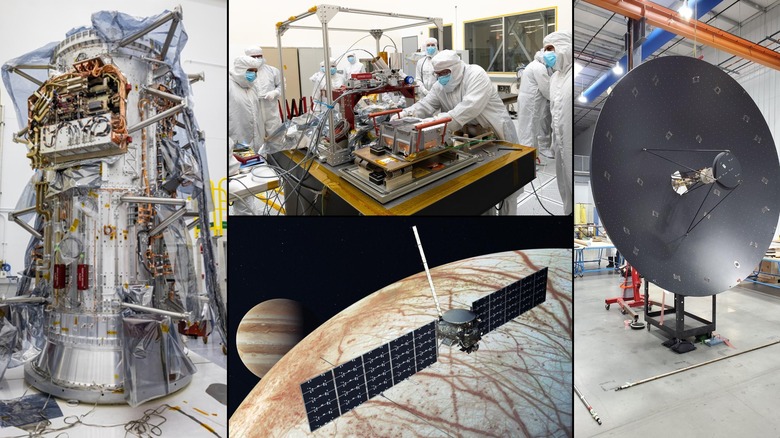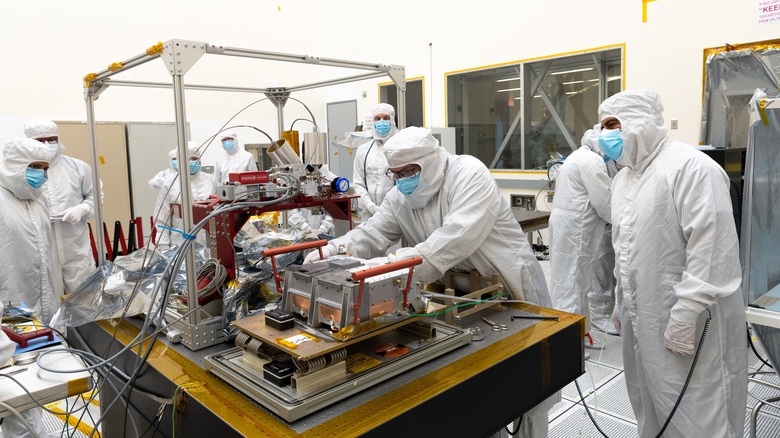Europa Clipper: What We Know About The Spacecraft That Will Travel To Jupiter's Moon In 2024
Of all the places in the solar system where we could search for life, one of the most exciting potential locations is Jupiter's moon Europa. This icy moon hosts a liquid ocean beneath its crust, and that has had scientists intrigued since the two Voyager spacecraft flew past in 1979 and spotted indications of water there.
Now, NASA is going back for a better look. The Europa Clipper spacecraft is scheduled to be launched in 2024, heading out through the solar system to perform a series of flybys of the moon. The aim of the mission is to take a closer look at that intriguing ice shell and ocean, to understand what the ocean is composed of, and to examine the geology of the moon's surface. Most of all, the mission will try to see if Europa could be habitable.
To get ready for this big mission, NASA's Jet Propulsion Laboratory (JPL) has begun assembling the Europa Clipper spacecraft, getting its scientific instruments and other hardware ready for launch in two years' time.
"We're moving into the phase where we see the pieces all come together as a flight system," said Europa Clipper Project Manager Jan Chodas of JPL. "It will be very exciting to see the hardware, the flight software, and the instruments get integrated and tested. To me, it's the next level of discovery. We'll learn how the system we designed will actually perform."
How to build a spacecraft
The base of the Europa Clipper spacecraft is a 10-foot tall main body module, which carries the propulsion subsystem along with electronics, radios, and other cabling. It is being built at the Johns Hopkins Applied Physics Laboratory (APL) in Maryland, with some help from NASA's Goddard Space Flight Center, and it is expected to arrive at JPL in spring.
Other parts, such as engineering components and science instruments, have already begun to arrive at JPL for assembly. The spacecraft will be armed with a suite of nine science instruments, including a magnetometer for measuring magnetic fields, several imagers for capturing pictures, several spectrometers which can tell the composition of an object by looking at spectrums of light, and tools for analyzing small particles ejected from Europa.
The instruments are expected to be installed by the end of 2022. Each instrument is tested when it arrives at JPL, is then installed into the spacecraft, and is then tested again. This makes sure the instruments communicate with the spacecraft computer and power systems correctly.
Once all of the hardware is installed, the entire craft will be moved into a huge vacuum chamber where it will be tested to make sure it can survive the cold vacuum of space, and further tests will ensure it can handle the vibrations and forces of launch.
It'll be a long two years of work for the engineers ahead of the October 2024 launch. "I don't know how I'll feel, seeing this come together. I suspect it will be somewhat overwhelming," said JPL's Robert Pappalardo, a Europa Clipper project scientist. "It's happening – it's becoming real. It's becoming tangible."

